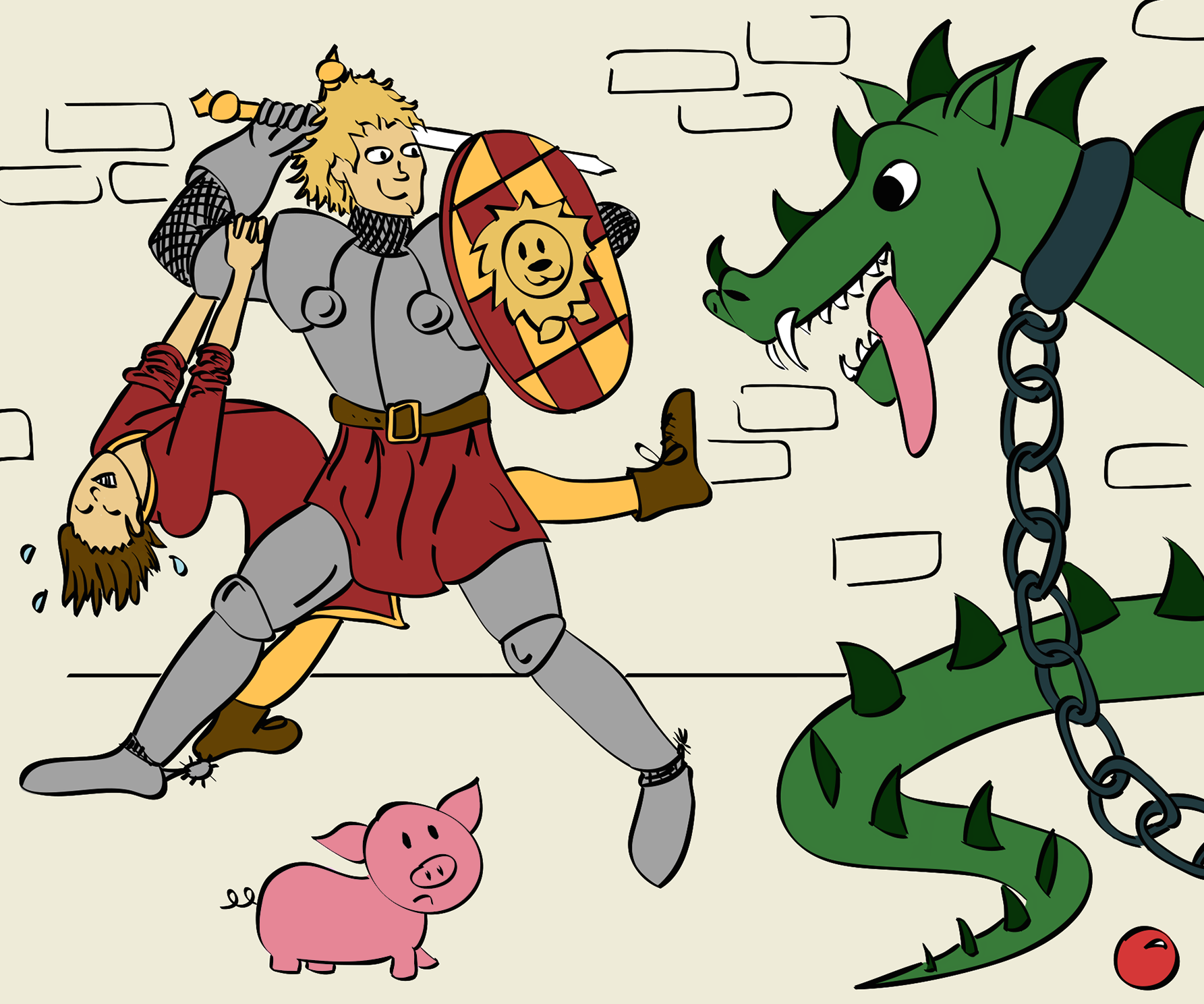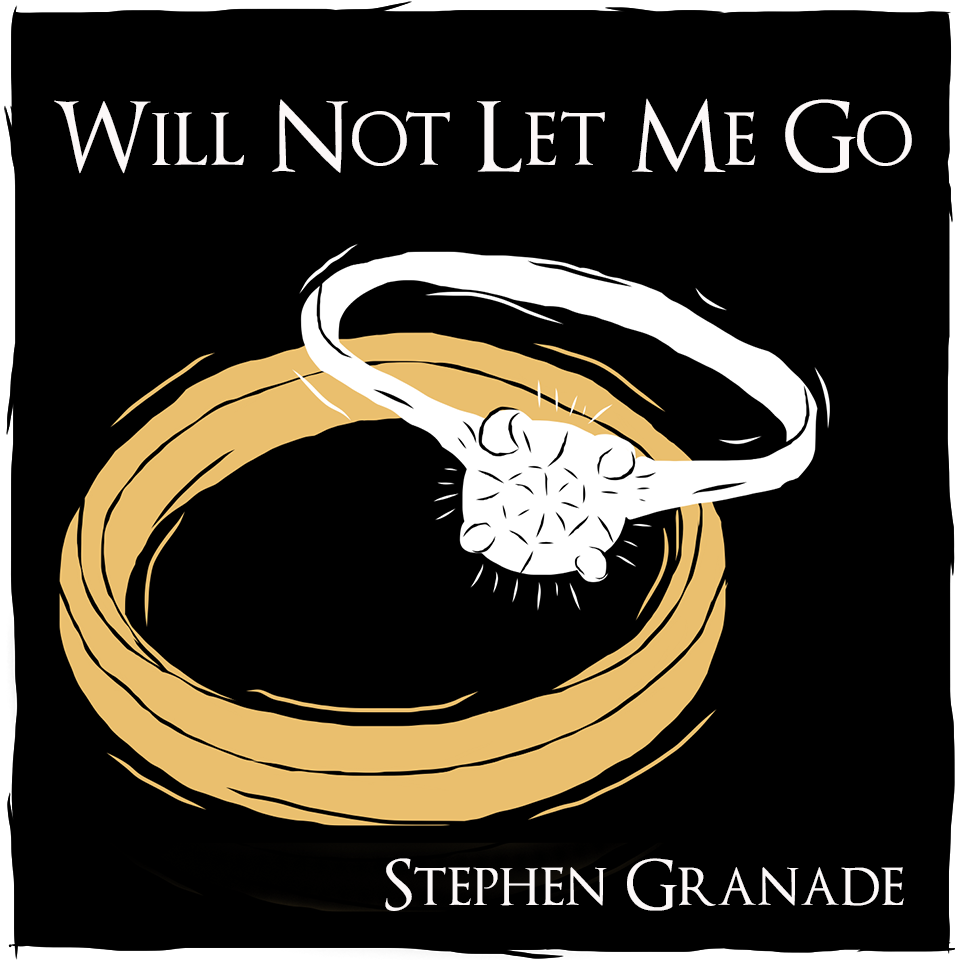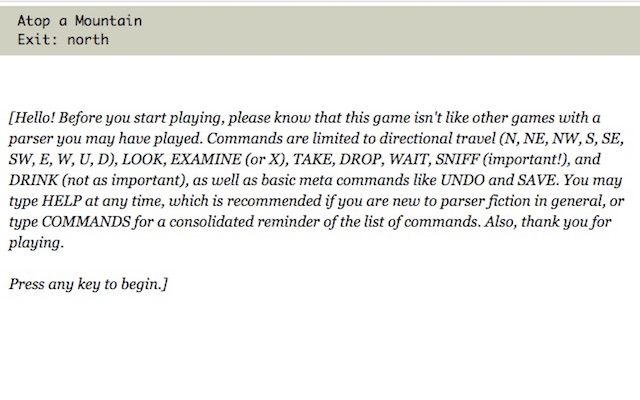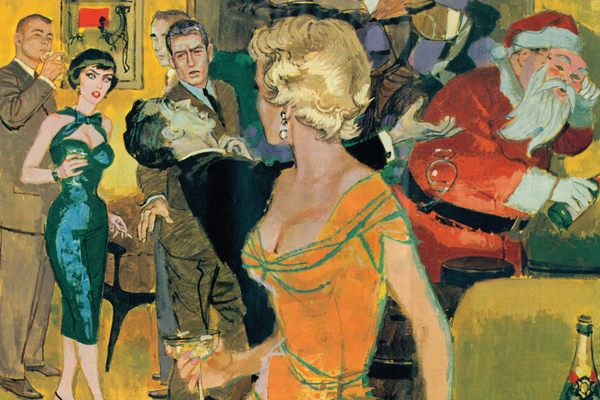Welcome to Interactive Fiction: You’re a Wizard-Sniffing Pig
How text-based games are changing way we tell stories.

Buster Hudson discovered interactive fiction by chance. While exploring the vast world of online game sites, he happened upon a game called Counterfeit Monkey, in which you play a smuggler of language technology, pursued by the Bureau of Orthography and eager to escape an island named Atlantis.
“I fell in love,” he says. “I don’t want to say interactive fiction is better than other video games, but it’s a different experience. You get to explore a world through text.”
Interactive fiction, in brief, can be thought of as a computer game made only of words and symbols, or an online novel in which the reader can talk to characters, explore the setting, and maybe affect the plot.

Many people, when they hear about interactive fiction, compare it to Choose Your Own Adventure books. Those who played computer games in the ‘80s might connect it to Zork, a text-based adventure in which players wander an underground empire in search of treasure. But interactive fiction can do much more than strand you in the past with Maya warriors or leave you stumbling around a dungeon for hours. A game might cast you a person struggling with depression, put you in conversation with a piece of art, or require that you eat your way out of a castle made of food.
When Hudson started writing his own interactive fiction, he used his games to talk about the experience of being gay—though so subtly, he says, that he’s not sure anyone noticed. But his most recent work has wizards and goblins, too. The Wizard Sniffer is a game built around the troubled relationship between a parent and a child, in which you play a pig who’s supposed to be able to sniff out wizards. The winner of this year’s Interactive Fiction Competition (IFComp), it’s a slapstick comedy of errors, with bumbling heroes, marriages of convenience, and affectionate monsters guarding surprising secrets.
IFComp, now in its 23rd year, received more entries this year than ever before and, for the first time, offered a pool of cash prizes. Little known and little understood, interactive fiction has grown quietly, but is now permeating American culture more deeply than most people realize. A piece of interactive fiction was the spark that grew into the misogynist controversy known as Gamergate, and this year two works of interactive fiction were featured in the Whitney Biennial.
“People keep telling me interactive fiction is dead,” says Nick Montfort, a poet and professor of digital media at the Massachusetts Institute of Technology. (In fact, there was an infamous forum thread in 2014 titled “IF is Dead.”) “But it seems to be continuing to appear in new contexts, and the old ones seem to be expanding.” In 2017, interactive fiction is alive and growing.

Interactive fiction traces its history to the text-based adventure game Colossal Cave Adventure, developed in 1976. In 1980, the early gaming software company Infocom released Zork, and for a brief time the company’s games were some of the most popular computer programs that had ever existed. Then graphics appeared, and fewer people wanted to play games with only words when pictures were an option.
Many text-based games rely on what’s called a “parser,” which lets players type in commands and see how the game reacts. Certain words are standard actions or qualifiers: look, take, go, north, south, east, west. The most expansive parser games had large vocabularies of prompts, and revealed secrets to players who could guess the right words.
In the 1990s, people nostalgic for these games found their ways to Usenet boards for interactive fiction, where Infocom fans gathered along with people experimenting with hypertext fiction, in which links let stories branch and move in ways impossible on the printed page.
Fans created tools that made it easier to write and share new interactive fiction, and in 1995 one author, Kevin Wilson, organized the first Interactive Fiction Competition with the aim of encouraging people to write shorter games, instead of the hours-long epics they’d been working on. To this day, entries in IFComp are supposed to be playable in under two hours.

Photopia, submitted in 1998, was one of the first competition games to push the boundaries of the medium. Text-based adventure games had always had puzzles—they can be one of the great pleasures of these games—but Photopia kept its puzzles limited and simple. The player could still walk around the settings and interact with other characters, but playing this game felt more like reading an emotional story than its forebears had. It made people cry.
Games like Photopia pushed writers to experiment with the unique possibilities of interactive text. The form invites complicity: The person playing the game is cast as the protagonist and might be required to make frightening choices or commit unthinkable acts to proceed.
Starting in the 2000s, it became popular to write games with tough ethical choices, says Stephen Granade, who organized IFComp for many years, and not everyone in the community appreciated the turn away from lighthearted romps. After the original renaissance of the form, the annual number of entries in the competition dropped below 50 from 2001 until 2015.

This year, though, IFComp had 79 entries, a record high. The growth of the past few years has come from the second mode of interactive fiction—hypertext games.
In 2009, developer and writer Chris Klimas released Twine, an open-source tool that made it easy to create interactive fiction using links, rather than a parser, to invite player input. Twine lent itself to more personal stories of pain and struggles with the self and identity. Porpentine Charity Heartscape’s howling dogs, submitted to IFComp in 2012 and featured this year at the Whitney Biennial, was made in Twine.
Technically, howling dogs is a “choice” game, where paths branch and the reader chooses the next move, but the choices don’t drive the plot. In the game, you find yourself in a featureless cell, you eat and drink and maybe shower, and you pull on a visor that transports you into a hallucinatory dream world. Inevitably you end back in the cell, and drawn back to the visor as conditions around you deteriorate. The game didn’t win IFComp, but it convinced many people of the power and possibilities of hypertext work.
Not everyone in the interactive fiction community is happy with the shift. That “IF Is Dead” thread in 2014 started with someone bemoaning the lack of attention to parser games.
At that time, this seemingly esoteric complaint was culturally loaded. Twine games had become popular vehicles for stories about LGBTQIA issues and the experiences of other marginalized people. Twine authors were more likely to be women than men. The game Depression Quest, the seed of Gamergate, which had begun months before, was a Twine game. If critics of Twine games thought they were just marking out room for the parser games they loved, their disdain—some of the most aggressive parser partisans vowed to automatically give non-parser IFComp entries the lowest score possible—came across as bias, or at least a tone-deaf move to exclude people subject to long histories of discrimination.

In this year’s IFComp, the two top-ranking games were parser-based, but as parser games go they’re welcoming to newcomers. “Parser-based interactive fiction is very good for letting you solve an underlying riddle,” says Montfort, from MIT. “It lets you figure out something about this simulated world, maybe in the way a detective encounters some kind of mystery. The game contains a test for its own understanding.”
But in some parser-based games that understanding can be elusive, because the text doesn’t give enough clues, and leaves players groping around for the triggering words. In “limited parser” games, such as The Wizard Sniffer, the list of words that can help you explore the world is short and defined. As the wizard-sniffing pig, the most powerful action you can take is to sniff. As the gluttonous child in Eat Me, the second-place game this year, the most powerful action you can take is to eat. And eat. And eat some more.

The games that placed third and fourth, though, were hypertext games. In Harmonia, by Liza Daly, you play an adjunct professor investigating the disappearance of the person whose class you’re teaching. Most of the choices in the game are about how deeply you want to dig into the text. Links lead to footnotes. The world isn’t made of rooms, but of historical facts.
“I was trying to recreate the experience of being in the library and following chains of reference,” says Daly. The one dramatic juncture, where the player can change the course of the game, is a moment of real decision, rather than arbitrary choice.
Will Not Let Me Go, which placed fourth, follows a man diagnosed with Alzheimer’s disease. In some places, the words stutter along or are hard to locate. In another, the world you’re exploring is your own house, where simple objects keep eluding you. The game’s author, Stephen Granade, the former competition organizer, has written many parser games, and he found writing the hypertext Will Not Let Me Go a new challenge. “Some of my skills in terms of how to write in second person to indicate what you should be paying attention to did carry over,” he says.
What connects these two modes of interactive fiction—parser and hypertext? “There’s no other experience based around text that so immediately and so intimately rewards close reading,” says Jason McIntosh, who has organized the competition for the past few years. “It takes everything that’s good about text, and everything that’s good about video games, and combines them in the best way.”
Hudson, who’s drawn to the special power of parser games, sees interactive fiction writers pushing the storytelling possibilities of that style, too. Puzzles in parser-based games can be used as little more than entertaining diversions—but they can also control pacing, add comedy, test a player’s complicity, or develop characters. Once, says Hudson, a character connected to a puzzle might act more as a key or a door, rather than a more fully developed person. “Now the puzzles exist because of the people,” he says. “They help you spend time with the characters.”
He’s proud, too, that The Wizard Sniffer drew in some way from both modes of interactive fiction. “Not only did I make a game that came in first,” he says, “I made a game that’s a queer story that came first.” There have been past winners with queer characters (one with a hidden command to turn “HETERONORMATIVITY OFF”), but The Wizard Sniffer appears to be the first story built around a queer theme to ever win IFComp.
After the “largest and highest-quality year in the competition’s history, [IFComp] has a lot of momentum right now,” says Jacqueline Ashwell, who’s taking over as organizer. The aim is to make next year’s even better. One of the great charms of IFComp is that anyone who plays at least five of the games can act as a judge. All you have to do is wait a year and start exploring.












Follow us on Twitter to get the latest on the world's hidden wonders.
Like us on Facebook to get the latest on the world's hidden wonders.
Follow us on Twitter Like us on Facebook